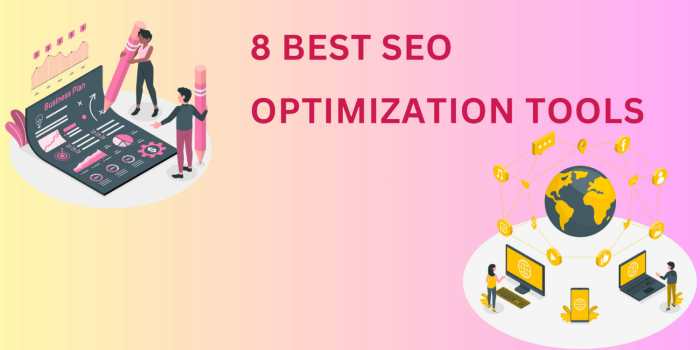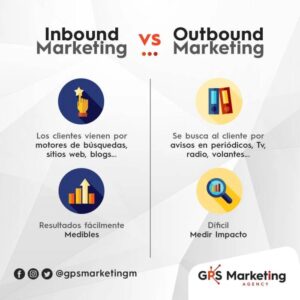
Starting with optimization tools, it’s essential to recognize their crucial role in the digital marketing landscape. These tools not only streamline the process of improving website visibility but also provide valuable insights into audience behavior and trends.
From analysis to competitor research, the diverse range of tools available today empowers marketers to fine-tune their strategies, making informed decisions that drive traffic and enhance online presence. Understanding these tools is key to unlocking their potential in achieving your marketing goals.
Understanding Optimization Tools
In the rapidly evolving world of digital marketing, optimization tools play a crucial role in enhancing a website’s visibility and performance. These tools provide valuable insights and data that help businesses improve their online presence, attract organic traffic, and ultimately drive conversions. With the right tools, marketers can analyze their strategies, identify areas for improvement, and stay ahead of competitors. optimization tools come in various forms, each designed to address specific aspects of search engine optimization.
Understanding these tools and their functionalities is essential for any digital marketer aiming to leverage effectively. They range from research tools to backlink analysis platforms, providing a comprehensive suite of functionalities to tackle diverse challenges.
Types of Tools Available in the Market
tools can be categorized into several types, each serving a unique purpose in the optimization process. Below is an overview of the primary categories, along with their significance in enhancing strategies.
- Research Tools: These tools help identify relevant s that potential customers are searching for. By analyzing search volumes, competition, and trends, marketers can select the best s to target, significantly improving content relevance and search rankings.
- On-Page Tools: These tools analyze website elements such as title tags, meta descriptions, and content structure. They provide recommendations for optimizing these elements to improve search engine rankings and user experience.
- Backlink Analysis Tools: Understanding backlinks is essential for success. These tools evaluate the quality and quantity of backlinks pointing to a site, helping marketers identify opportunities for link building and track their domain authority.
- Site Audit Tools: Comprehensive site audits identify technical issues that could hinder a website’s performance. These tools scan for broken links, slow loading speeds, and mobile responsiveness, providing actionable insights for optimization.
- Rank Tracking Tools: Monitoring rankings is vital for measuring success. These tools track changes in rankings over time, allowing marketers to assess the effectiveness of their strategies and make necessary adjustments.
Comparison of Popular Optimization Tools
Numerous tools are available in the market, each differing in features, usability, and pricing. A clear comparison can assist marketers in selecting the right tool for their needs. Below is a comparison of three popular tools: SEMrush, Ahrefs, and Moz.
| Feature | SEMrush | Ahrefs | Moz |
|---|---|---|---|
| Research | Extensive database, difficulty score | Comprehensive suggestions, SERP analysis | difficulty and opportunity scores |
| Backlink Analysis | Detailed backlink audit, toxic link analysis | Large backlink index, competitor backlink analysis | Link metrics, spam score monitoring |
| Site Audit | In-depth site audits with actionable insights | Thorough technical audits | User-friendly site auditing tools |
| Rank Tracking | Daily updates, local and organic tracking | Global and local rank tracking options | ranking tracking with reporting features |
| Pricing | Starts at $119.95/month | Starts at $99/month | Starts at $99/month |
“Choosing the right tool can significantly impact your digital marketing strategy and the success of your website in search rankings.”
Market Research in
Market research plays a pivotal role in shaping effective strategies, ensuring that businesses align their online presence with audience needs and industry trends. Understanding the market landscape not only informs selection and content creation but also helps in identifying the right target audience and competitive positioning. This foundational step is crucial for optimizing efforts and maximizing return on investment.Analyzing market data allows businesses to tailor their strategies to better meet the needs of their audience, leading to improved engagement and conversion rates.
By leveraging various tools and methodologies, businesses can dive deep into consumer behavior, market trends, and competitor tactics. This comprehensive view ultimately enhances decision-making and prioritizes efforts where they can achieve the most impact.
Methods for Collecting and Analyzing Market Data for
Effective market research requires a combination of qualitative and quantitative methods. Here are some primary approaches to gather and analyze data for purposes:
- Surveys and Questionnaires: Collecting responses from your target audience can provide insights into their preferences, needs, and pain points. Tools like SurveyMonkey or Google Forms facilitate easy distribution and analysis of survey data.
- Competitor Analysis: Evaluating competitors’ websites, s, and content strategies helps identify gaps in your own approach and opportunities to outperform them. Tools like SEMrush and Ahrefs are essential for this type of analysis.
- Social Media Listening: Monitoring social media platforms for mentions of your brand or industry-related s can reveal customer sentiments and emerging trends. Platforms like Hootsuite and Brandwatch offer powerful listening capabilities.
- Google Analytics and Search Console: Analyzing traffic sources, user behavior, and search queries helps refine strategies by understanding which areas are performing well and which need improvement.
- Industry Reports and Studies: Accessing established reports from organizations like Statista or Nielsen provides valuable market insights and benchmarking data that can shape tactics.
Tools for Market Research Related to
Various tools are available that assist in market research, providing insights essential for effective strategies. Utilizing these tools can streamline the research process and enhance the quality of the data collected:
- SEMrush: This all-in-one tool provides insights into competitor strategies, research, and site audits, making it invaluable for market research in .
- Ahrefs: Known primarily for its backlink analysis, Ahrefs also offers extensive research features and competitor analysis tools, helping users identify opportunities in their niche.
- Google Trends: This free tool allows users to explore the popularity of search queries over time, helping to identify seasonal trends and shifts in consumer interest.
- BuzzSumo: This tool helps discover popular content and key influencers in any niche, providing insights into what kind of content resonates with the audience.
- SurveyMonkey: With its user-friendly interface, it allows businesses to create and distribute surveys to gather direct feedback from their audience.
Integration of Marketing Software with

The integration of marketing software with strategies is a pivotal aspect of modern digital marketing. By leveraging various software tools, businesses can enhance their efforts, streamline their processes, and improve overall online visibility. This synergy allows marketers to track their performance, optimize their content, and ultimately drive traffic more effectively.Marketing software plays a crucial role in enhancing initiatives by providing insights into user behavior, performance, and competitive analysis.
These tools help marketers not only to implement best practices but also to adapt and refine their strategies based on real-time data. The following sections will explore key marketing software solutions that complement strategies and their respective capabilities.
Key Marketing Software Solutions
There are many marketing software options available that effectively integrate with efforts. Below is a list of notable solutions, each with unique features that enhance capabilities. Understanding these tools enables businesses to select the right software for their specific needs.
| Software Solution | Capabilities |
|---|---|
| SEMrush | research, site audit, competitive analysis, backlink tracking. |
| Ahrefs | Comprehensive backlink analysis, explorer, content analysis, audits. |
| Moz Pro | research tools, link building features, on-page optimization suggestions. |
| Google Analytics | User behavior tracking, traffic source analysis, goal setting for conversions. |
| HubSpot | Content management, recommendations, analytics dashboard for performance tracking. |
| Yoast | On-page analysis, readability checks, XML sitemap generation for WordPress sites. |
| SpyFu | research, competitor analysis, PPC analysis for integrated marketing strategies. |
“Integrating marketing software with practices not only streamlines processes but also maximizes the potential for improved search engine rankings.”
Public Relations and Synergy
Public relations (PR) and search engine optimization () are two powerful elements that can work together to enhance a brand’s online presence. When PR strategies are effectively integrated with practices, they can significantly improve a company’s search visibility, driving more organic traffic to its website. Understanding how these two disciplines intersect is crucial for maximizing their potential in digital marketing.PR initiatives can impact outcomes in several ways.
By generating high-quality backlinks, creating shareable content, and increasing brand awareness, publicity efforts contribute directly to search engine rankings. Search engines favor websites that are linked to from reputable sources, as this signifies trustworthiness and authority. Therefore, successful PR campaigns that result in media coverage or mentions can enhance a brand’s credibility and visibility in search results.
PR Tactics to Improve Search Visibility
To effectively leverage PR for , organizations can employ various tactical approaches. Here are some key PR tactics that can boost search visibility:
- Press Releases: Crafting well-optimized press releases with targeted s can generate media coverage and backlinks. Distributing them through reputable news outlets can further enhance visibility.
- Influencer Collaborations: Partnering with influencers or industry leaders can lead to increased mentions and shares across social media platforms, contributing to greater brand recognition and potential backlinks.
- Content Marketing: Developing high-quality, informative content that addresses audience needs can attract media interest and backlinks. Infographics, expert interviews, and case studies are effective formats.
- Event Sponsorships: Hosting or sponsoring events can create buzz, leading to increased online conversations and news articles that link back to your website.
Each of these tactics not only enhances the public perception of the brand but also provides valuable benefits by driving traffic and improving rankings.
Measuring the Effectiveness of PR Efforts on Performance
To evaluate the impact of PR on , measuring specific metrics is essential. Organizations can use several methods to assess the effectiveness of their PR initiatives:
- Backlink Analysis: Tracking the number and quality of backlinks generated from PR efforts, using tools like Ahrefs or SEMrush, can indicate the success of campaigns in enhancing site authority.
- Traffic Monitoring: Analyzing website traffic and identifying spikes in visitor numbers following PR campaigns can demonstrate the direct correlation between PR activities and increased website visits.
- Ranking Changes: Regularly monitoring ranking positions for targeted s can reveal whether PR strategies are improving visibility in SERPs.
- Social Media Engagement: Measuring increases in engagement metrics (likes, shares, comments) on social media platforms post-PR campaigns can provide insights into audience reception and brand awareness.
Implementing these measurement techniques can help brands refine their strategies, ensuring that PR continues to complement efforts effectively.
Telemarketing and
Telemarketing and may seem like two distinct marketing strategies, but they can work together effectively to boost a business’s online presence. Telemarketing involves direct interaction with potential customers through phone calls, while focuses on optimizing a website to rank higher in search engine results. When these strategies align, they can create a holistic approach to customer engagement and conversion.By integrating telemarketing efforts with strategies, businesses can enhance their outreach and improve their rankings.
Telemarketing can provide valuable insights into the needs and preferences of target audiences, which can then inform efforts. For example, understanding what potential customers are searching for can help tailor website content to match those interests, thereby improving organic visibility. Furthermore, telemarketing can drive traffic to optimized pages, reinforcing the effectiveness of initiatives.
Telemarketing Best Practices Supporting Goals
Implementing effective telemarketing practices can significantly support objectives. Here are some best practices that can help ensure synergy between these two strategies:
These best practices can enhance the effectiveness of telemarketing campaigns while bolstering efforts:
- Use -Driven Insights: Gather data on customer pain points and interests during calls to refine strategies and content themes.
- Promote Online Resources: Encourage leads to visit your website for more information, utilizing optimized landing pages to capture interest.
- Follow Up with Email: After a call, sending follow-up emails with links to relevant content can enhance user engagement and improve site traffic.
- Track Engagement Metrics: Monitor how telemarketing efforts influence website traffic and conversions to adjust strategies accordingly.
- Segment Your Audience: Use insights from telemarketing to create targeted campaigns that speak directly to specific customer segments.
- Leverage Customer Feedback: Use feedback collected through telemarketing calls to identify gaps in your content, guiding content creation.
“Combining telemarketing with strategies can lead to more personalized customer experiences and improved online visibility.”
End of Discussion

In summary, optimization tools are indispensable for any digital marketing strategy, offering a comprehensive approach to understanding and improving online visibility. By integrating these tools effectively with other marketing efforts, businesses can achieve a balanced and successful strategy that drives growth.
FAQ Overview
What are optimization tools?
optimization tools are software applications that help assess, analyze, and improve the performance of websites.
Why are tools important?
They provide insights into how to increase a website’s visibility on search engines, which is essential for attracting organic traffic.
Do I need to pay for tools?
While there are free tools available, paid ones typically offer more advanced features and comprehensive data.
How often should I use tools?
Regular use is recommended, especially when making updates to your website or running campaigns, to track performance and adjust strategies.
Can tools help with content creation?
Yes, many tools provide suggestions and content optimization tips, which can enhance content creation efforts.





